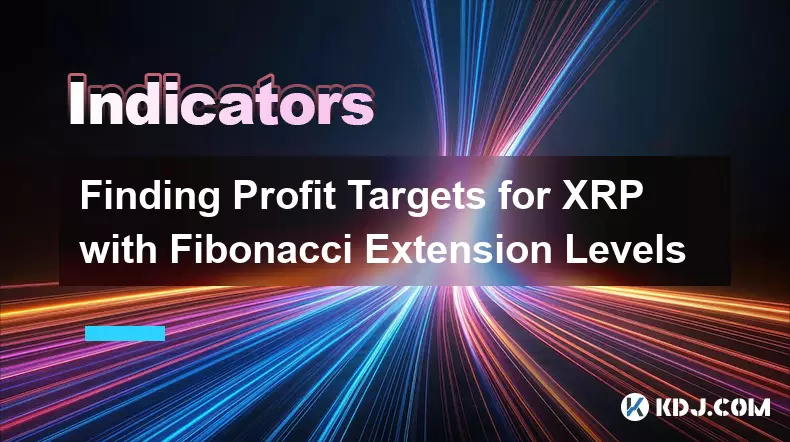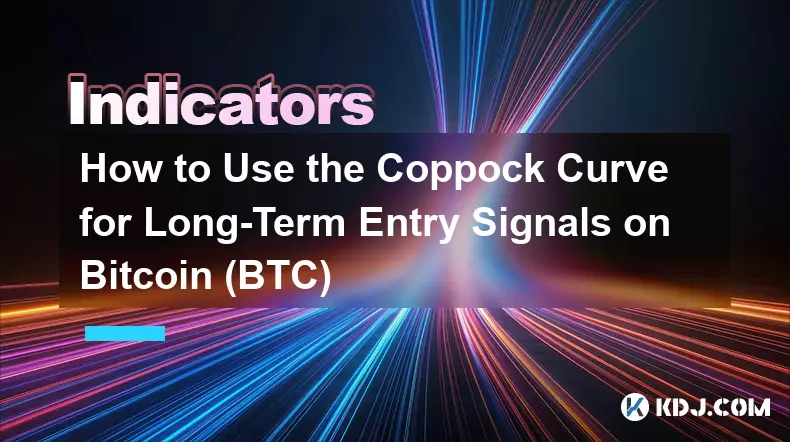-
 bitcoin
bitcoin $99177.955738 USD
-7.32% -
 ethereum
ethereum $3187.183061 USD
-12.38% -
 tether
tether $0.999809 USD
0.00% -
 xrp
xrp $2.117933 USD
-9.42% -
 bnb
bnb $906.710033 USD
-9.17% -
 solana
solana $149.367737 USD
-10.74% -
 usd-coin
usd-coin $0.999816 USD
0.01% -
 tron
tron $0.281498 USD
-0.38% -
 dogecoin
dogecoin $0.156292 USD
-8.00% -
 cardano
cardano $0.500744 USD
-10.19% -
 hyperliquid
hyperliquid $38.087358 USD
-4.58% -
 chainlink
chainlink $14.097831 USD
-8.54% -
 bitcoin-cash
bitcoin-cash $463.329916 USD
-9.22% -
 ethena-usde
ethena-usde $0.999078 USD
-0.01% -
 unus-sed-leo
unus-sed-leo $9.475862 USD
-0.79%
Finding Profit Targets for XRP with Fibonacci Extension Levels
XRP traders use Fibonacci extensions like 161.8% and 261.8% to identify key profit targets, with historical price reactions confirming their reliability during rallies and corrections.
Nov 05, 2025 at 02:49 am

Finding Profit Targets for XRP Using Fibonacci Extension Levels
Traders in the cryptocurrency market constantly seek reliable tools to identify potential price targets. One of the most widely used techniques among technical analysts is the application of Fibonacci extension levels. These levels help traders anticipate where an asset like XRP might find resistance or support after a significant price move. By measuring the retracement and extension of prior swings, Fibonacci ratios provide insight into future price zones that could serve as profit-taking areas.
Fibonacci extensions are based on key mathematical ratios derived from the Fibonacci sequence—most notably 61.8%, 78.6%, 100%, 127.2%, 161.8%, and 261.8%. When applied correctly, these levels act as predictive markers indicating where momentum-driven moves may stall or reverse. For XRP, which often exhibits strong trend behavior during bull runs or sharp corrections, these levels become especially valuable when determining exit points.
How to Apply Fibonacci Extensions to XRP Charts
- Identify a clear swing low and swing high in XRP’s price action.
- Use a charting platform that supports Fibonacci tools to draw the extension from the swing low through the swing high and beyond.
- Mark the key extension levels: 127.2%, 161.8%, and 261.8%.
- Monitor how price interacts with these levels during continuation phases.
- Adjust stop-loss and take-profit orders based on confluence with other technical indicators such as volume spikes or moving averages.
For instance, during a bullish impulse following a pullback, if XRP breaks above the 100% extension level, it signals strong buyer conviction. The next likely target becomes the 161.8% extension. Historical data shows that XRP has frequently reacted at or near this zone, either pausing for consolidation or reversing temporarily.
Historical Validation of Fibonacci Levels in XRP Moves
- In early 2021, after a rally from $0.20 to $0.78, XRP corrected before resuming upward movement. The 161.8% Fibonacci extension projected a target near $1.25, which aligned closely with the actual peak before a reversal occurred.
- During the 2023 recovery phase, a measured move from $0.35 to $0.55 saw price extend toward the 161.8% level at approximately $0.80. Price approached this mark but stalled due to increasing selling pressure.
- A deeper correction in late 2022 found temporary support at the 78.6% retracement level before bouncing back toward the 127.2% extension.
- Volume analysis confirmed stronger reactions at Fibonacci levels where institutional participation was evident.
- Multiple touches of the 161.8% extension across different timeframes have resulted in bearish engulfing patterns or doji candles, signaling exhaustion.
These examples illustrate that Fibonacci extensions are not arbitrary lines but represent psychological and algorithmic decision points widely watched by traders globally. When major exchanges show increased sell limit orders clustered around these levels, it reinforces their significance.
Combining Fibonacci with Other Technical Tools
- Overlay Fibonacci extensions with long-term moving averages such as the 200-day EMA to assess strength of trend continuation.
- Use RSI divergence at extension levels to detect weakening momentum even before price reverses.
- Integrate order book data to confirm whether large limit sell walls coincide with Fibonacci targets.
- Align extension levels with previous horizontal resistance zones for higher-probability trade setups.
- Incorporate candlestick patterns like shooting stars or bearish engulfers forming at extended levels to time exits precisely.
The convergence of Fibonacci extensions with structural support/resistance and momentum indicators increases the reliability of profit targets significantly. For example, when XRP reached the 161.8% extension in Q1 2023 and simultaneously encountered its prior all-time high structure around $0.92, the combination led to a sharp rejection. Traders who recognized this confluence were able to close long positions profitably.
Frequently Asked Questions
What timeframes work best for applying Fibonacci extensions to XRP?
Daily and weekly charts offer the most reliable results because they filter out noise common in lower timeframes. Swing traders often use the 4-hour chart in conjunction with daily extensions to fine-tune entries and exits.
Can Fibonacci extensions fail in volatile markets?
Yes, extreme volatility caused by news events or regulatory announcements can lead to price overshooting or skipping extension levels entirely. This is more common during breakout periods when emotions drive trading decisions over technical structure.
Do Fibonacci levels work equally well in both uptrends and downtrends?
Absolutely. In downtrends, Fibonacci extensions help project downside targets after a pullback. For example, after a decline from $1.00 to $0.50 followed by a rebound to $0.70, the extension can forecast a continuation down to the 161.8% level below $0.30, which may act as a new floor or acceleration point.
Disclaimer:info@kdj.com
The information provided is not trading advice. kdj.com does not assume any responsibility for any investments made based on the information provided in this article. Cryptocurrencies are highly volatile and it is highly recommended that you invest with caution after thorough research!
If you believe that the content used on this website infringes your copyright, please contact us immediately (info@kdj.com) and we will delete it promptly.
- XRP ETF Race Heats Up: FTI Filing Sparks November Launch Buzz
- 2025-11-05 18:45:01
- Crypto's US Liquidity Crisis: Bitcoin's Wild Ride and What's Next
- 2025-11-05 19:00:02
- Bybit, Block Scholes, and Crypto Derivatives: Navigating the Evolving Landscape
- 2025-11-05 19:10:01
- MARA Dumps, Bitcoin Pullback End? Decoding the Crypto Market's Latest Moves
- 2025-11-05 19:45:01
- Bitcoin Dip? Time to Buy Bitcoin, Maybe!
- 2025-11-05 19:45:01
- Crypto ETFs, Bitcoin, and Solana: A New York Minute on Shifting Tides
- 2025-11-05 19:50:01
Related knowledge

Using TradingView for crypto: essential tips and tools for chart analysis.
Nov 05,2025 at 04:30am
Mastering Chart Types on TradingView1. Selecting the right chart type is crucial for accurate crypto analysis. The default candlestick chart remains a...

Technical analysis for crypto: using RSI and MACD to find trading signals.
Nov 03,2025 at 03:18pm
Decentralized Exchanges Are Reshaping Trading Dynamics1. Decentralized exchanges (DEXs) have gained significant traction by eliminating intermediaries...

Reading crypto charts for beginners: understanding candlestick patterns.
Nov 05,2025 at 02:55am
Introduction to Candlestick Charts in Crypto Trading1. Candlestick charts are one of the most widely used tools in cryptocurrency trading, offering vi...

The Best Exponential Moving Average (EMA) Settings for Crypto Swing Trading
Oct 25,2025 at 04:55pm
The Best Exponential Moving Average (EMA) Settings for Crypto Swing TradingSwing trading in the cryptocurrency market relies heavily on identifying tr...

How to Use the Coppock Curve for Long-Term Entry Signals on Bitcoin (BTC)
Oct 31,2025 at 03:01pm
Understanding the Coppock Curve in Bitcoin Analysis1. The Coppock Curve is a momentum indicator originally designed for stock market indices but has f...

A Beginner's Guide to Finding Divergence with the MACD on the Solana (SOL) Chart
Oct 26,2025 at 12:36pm
Understanding MACD and Its Role in Solana Trading1. The Moving Average Convergence Divergence (MACD) is a momentum indicator widely used in cryptocurr...

Using TradingView for crypto: essential tips and tools for chart analysis.
Nov 05,2025 at 04:30am
Mastering Chart Types on TradingView1. Selecting the right chart type is crucial for accurate crypto analysis. The default candlestick chart remains a...

Technical analysis for crypto: using RSI and MACD to find trading signals.
Nov 03,2025 at 03:18pm
Decentralized Exchanges Are Reshaping Trading Dynamics1. Decentralized exchanges (DEXs) have gained significant traction by eliminating intermediaries...

Reading crypto charts for beginners: understanding candlestick patterns.
Nov 05,2025 at 02:55am
Introduction to Candlestick Charts in Crypto Trading1. Candlestick charts are one of the most widely used tools in cryptocurrency trading, offering vi...

The Best Exponential Moving Average (EMA) Settings for Crypto Swing Trading
Oct 25,2025 at 04:55pm
The Best Exponential Moving Average (EMA) Settings for Crypto Swing TradingSwing trading in the cryptocurrency market relies heavily on identifying tr...

How to Use the Coppock Curve for Long-Term Entry Signals on Bitcoin (BTC)
Oct 31,2025 at 03:01pm
Understanding the Coppock Curve in Bitcoin Analysis1. The Coppock Curve is a momentum indicator originally designed for stock market indices but has f...

A Beginner's Guide to Finding Divergence with the MACD on the Solana (SOL) Chart
Oct 26,2025 at 12:36pm
Understanding MACD and Its Role in Solana Trading1. The Moving Average Convergence Divergence (MACD) is a momentum indicator widely used in cryptocurr...
See all articles










































































